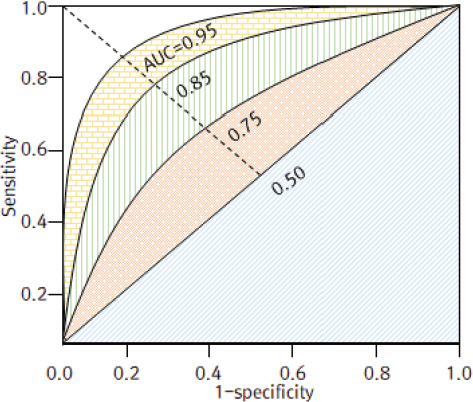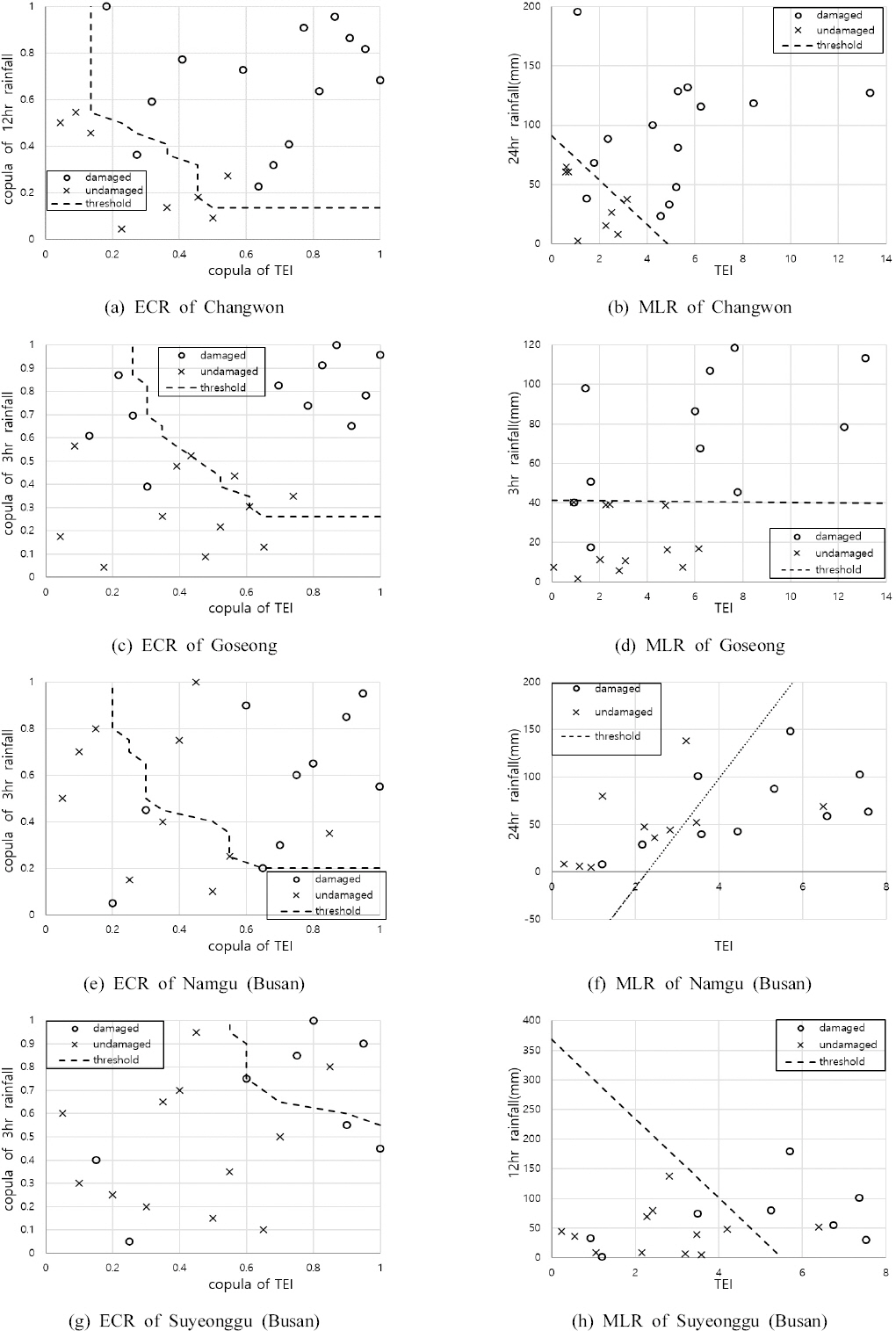1. An, S, Lee, S, Won, M, Lee, M, and Shin, Y (2004) Developing the forest fire occurrence probability model using GIS and mapping forest fire risks. The Korean Association of Geographic Information Studies, Vol. 7, No. 4, pp. 57-64.
2. Brunetti, M, Peruccacci, S, Rossi, M, Luciani, S, and Guzzetti, F (2010) Rainfall thresholds for the possible occurrence of landslides in Italy.
Natural Hazards and Earth System Sciences, Vol. 10, pp. 447-458.

3. Choi, K (1989) Methodologies for landslide prediction and prevention efforts. Research Databases of Korea Forest Research Institute, No. 27, pp. 1-3.
4. Guzzetti, F, Peruccacci, S, Rossi, M, and Stark, C (2007) Rainfall thresholds for the initiation of landslides in central and southern Europe.
Meteorology abd Atmospheric Physics, Vol. 98, pp. 239-267.


5. Ham, D, and Hwang, S (2014) Review of landslide forecast standard suitability by analysing landslide-inducing rainfall.
J. Korean Soc. Hazard Mitig, Vol. 14, No. 3, pp. 299-310.

6. Hong, W, Kim, Y, Kim, S, Han, J, and Kim, M (1990) Prediction of rainfall- triggered Landslides in Korea. The Journal of Engineering Geology, Vol. 6, No. 2, pp. 159-167.
7. Kim, H, Kim, B, Kim, H, Lee, J, and Shim, J (2020) Estimating the threshold value of disaster-causing snowfall by region and its application to regional classification.
J. Korean Soc. Hazard Mitig, Vol. 20, No. 1, pp. 41-52.


8. Kim, J, Choi, C, Kim, D, Joo, H, Kim, J, and Kim, H (2018) Establishment of hazard-trigglering rainfall according to heavy rain damage scale:Focused on Gyeonggi-do.
Journal of Climate Research, Vol. 13, No. 4, pp. 297-311.

9. Kim, J, Lee, J, Kim, D, Choi, C, Lee, M, and Kim, H (2019) Developing a prediction model (Heavy rain damage occurrence probability) based on machine learning.
J. Korean Soc. Hazard Mitig, Vol. 22, No. 5, pp. 201-210.


10. Kim, T (2021) Development of new typhoon rating to predict magnitude of damage.
J. Korean Soc. Hazard Mitig, Vol. 21, No. 5, pp. 251-261.


11. Kim, W, Lee, S, Kim, K, and Chae, B (1998) Landslide types and susceptibilities related to geomorphic characteristics:Yeonchon-Chulwon area. The Journal of Engineering Geology, Vol. 8, No. 2, pp. 115-130.
12. Kim, Y, and Jung, S (2000) A study on the rainfall-triggered landslides in Daijon-Chungnam area. Korean Society of Civil Engineers, Vol. 20, No. 4C, pp. 341-355.
13. Kim, T (2022) Development of a typhoon damage prediction function and rating system using typhoon characteristics and tracks.
J. Korean Soc. Hazard Mitig, Vol. 22, No. 5, pp. 201-210.


16. Lee, S, Kang, D, and Kim, B (2018) A study on the method of calculating the threshold rainfall for rainfall impact forecasting.
J. Korean Soc. Hazard Mitig, Vol. 18, No. 7, pp. 93-102.


17. Lee, Y (1991) Geotechnical engineering and natural disaster (II) - Landslide. Journal of Korean Geotechnical Society, Vol. 7, No. 1, pp. 105-113.
18. Ministry of the Interior and Safety (MOIS). (1996-2020) (Annual natural disaster report (1994-2020). Ministry of Public Safety and Security.
19. Montesarcjio, V, Lombardo, F, and Napolitano, F (2009) Rainfall thresholds and flood warning:an operative case study. Natural Hazards and Earth System Sciences, Vol. 10, pp. 447-458.
20. Nikolopoulos, E, Crema, S, Marchi, L, Marra, F, Guzzetti, F, and Borga, M (2014) Impact of uncertainty in rainfall estimation on the identification of rainfall thresholds for debris flow occurrence.
Geomorphology, Vol. 221, pp. 286-297.

21. Park, S, and Kang, B (2014) Differentiating scheme for the storm warning criteria considering the regional disaster prevention capacity.
J. Korean Soc. Hazard Mitig, Vol. 14, No. 5, pp. 67-76.

22. Song, J, Moftakhri, H, and Moradkhani, H (2019) An alternative hurricane hazard indicator. 2019 AGU Fall Meeting.
23. Yang, I, Chun, K, Park, J, and Lee, S (2007) An estimation to landslide vulnerable area of rainfall condition using GIS. Korean Society for Geospatial Information System, Vol. 15, No. 1, pp. 39-46.
24. Yun, C, Jun, K, Kim, K, Kim, H, and Lee, S (2010) Analysis of slope hazard-triggering rainfall characteristics on Gangwon province by database construction. The Journal of Engineering Geology, Vol. 26, No. 10, pp. 27-38.











